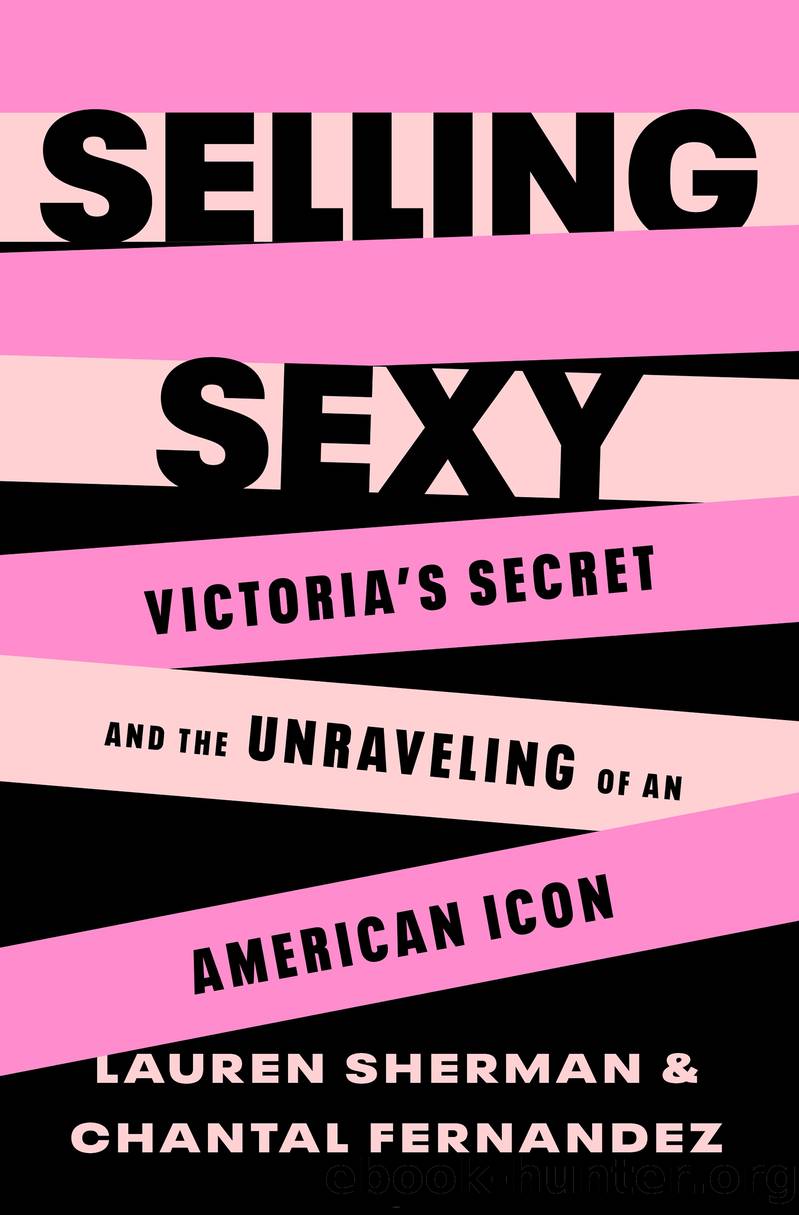Selling Sexy by Lauren Sherman

Author:Lauren Sherman
Language: eng
Format: epub
Publisher: Henry Holt and Co.
* * *
Despite Pinkâs unstoppable growth and profit margins (as high as 70 percent in some categories), the brand struggled to mature out of its pseudo-start-up phase. Even by the mid-2010s, it remained a scrappy operation, and within Limited Brands, it was always considered a second-class business next to Victoriaâs Secret.
In the first decade of the 2000s, Victoriaâs Secret was essentially three independent and fiercely competitive companies: Grace Nicholsâs Columbus-based stores division; the New York Cityâbased catalog division, run by Cindy Fedus-Fieldsâs successor Sharen Jester Turney; and the New York Cityâbased beauty division, led by Robin Burns. Pink would have fit naturally within the stores division, but Nichols and her merchants did not want it. They had little time to deal with an entire new category, for one, but they also knew that giving Pink room to grow would mean sacrificing square footage already reserved for other, more established collections under the Victoriaâs Secret label. A key factor in a particular bra lineâs sales performance was simply how much physical space it had on the floors of the more than one thousand Victoriaâs Secret stores. And no one wanted to sacrifice any of their categoryâs space for Pink.
Pink clearly merited its own dedicated division of merchants, designers, and marketers. Holman-Raoâs team launched it but would need to hand it off to permanent leadership. Rao hoped to be the one to lead Pink, and she shared her wishes with Len Schlesinger, then Wexnerâs chief operating officer. It would not be so, and she was confused when, without warning, Schlesinger hired an outsider as Pinkâs first CEO in 2005. That executive lasted less than a year before being terminated.
Fed up, Holman-Rao surprised Wexner by resigning in 2006. She never told him that Schlesinger had passed her over, which had forced her decision. The central design team she led, so integral to Pinkâs development, carried on a few years before Wexner disbanded it and reassigned its team into the divisions.
Eventually, Pink found its permanent leadership in Denise Landman, a former hosiery merchant. Unlike many of the top executives who arrived after the influx of consultants at the Limited in the late 1990s, she lacked the pedigree of an Ivy League MBA. But Wexner greatly respected her and formally appointed Landman as Pinkâs chief executive.
Pink retained a plucky start-up attitude as it grew. Helpfully, Razek barely involved himself in Pinkâs marketing. He had bigger priorities, so Pink could ignore many of the Victoriaâs Secret brand codes. Its college ambassadors served as local influencers in a pre-Instagram era. Its press events did not always revolve around the models, either. Instead, Pink hosted outdoor parties in New York City and Miami with age-appropriate musical performers like Ashlee Simpson. Guests were given coupons to draw them into stores.
Pinkâs distinct aesthetic took inspiration from the fashion photography style dominating the mid-2000s, thanks to photographer Terry Richardson: studio-style snapshots with bold lighting and an undone quality that communicated authentic glamour. Richardson, however, leaned into hypersexuality in his images, often encouraging models to remove their clothes and allegedly sometimes assaulting them.
Download
This site does not store any files on its server. We only index and link to content provided by other sites. Please contact the content providers to delete copyright contents if any and email us, we'll remove relevant links or contents immediately.
Life 3.0: Being Human in the Age of Artificial Intelligence by Tegmark Max(5509)
The Sports Rules Book by Human Kinetics(4341)
The Age of Surveillance Capitalism by Shoshana Zuboff(4243)
ACT Math For Dummies by Zegarelli Mark(4019)
Unlabel: Selling You Without Selling Out by Marc Ecko(3623)
Blood, Sweat, and Pixels by Jason Schreier(3584)
Hidden Persuasion: 33 psychological influence techniques in advertising by Marc Andrews & Matthijs van Leeuwen & Rick van Baaren(3517)
Bad Pharma by Ben Goldacre(3396)
The Pixar Touch by David A. Price(3389)
Urban Outlaw by Magnus Walker(3365)
Project Animal Farm: An Accidental Journey into the Secret World of Farming and the Truth About Our Food by Sonia Faruqi(3189)
Kitchen confidential by Anthony Bourdain(3046)
Brotopia by Emily Chang(3026)
Slugfest by Reed Tucker(2972)
The Content Trap by Bharat Anand(2887)
The Airbnb Story by Leigh Gallagher(2820)
Coffee for One by KJ Fallon(2599)
Smuggler's Cove: Exotic Cocktails, Rum, and the Cult of Tiki by Martin Cate & Rebecca Cate(2495)
Beer is proof God loves us by Charles W. Bamforth(2414)
